Today, DDHQ data contributor Aaron Booth explores the changing political landscape of the Mississippi River. You can follow him here.
It was certainly no accident that Minnesota Senator Amy Klobuchar launched her 2020 Presidential campaign standing next to the Mississippi River. Not only did it allow her to discuss the 2007 I-35W bridge collapse and her effort with then Republican Senator Norm Coleman to secure $250 million in emergency bridge reconstruction, but it gave her an opening to argue her regional strengths as a candidate. The Mississippi runs through ten states. Two states that flipped from Obama to Trump, and a third, Klobuchar’s home state of Minnesota, went by a narrow 1.52% margin to Clinton in 2016.
In her speech in Minneapolis, Klobuchar led with “We are gathered here today on the Mississippi River—America’s great river, running straight through the middle of our country, through the heartland.” This prompted us to take a look at the counties along the river and how they’ve reflected Presidential races.
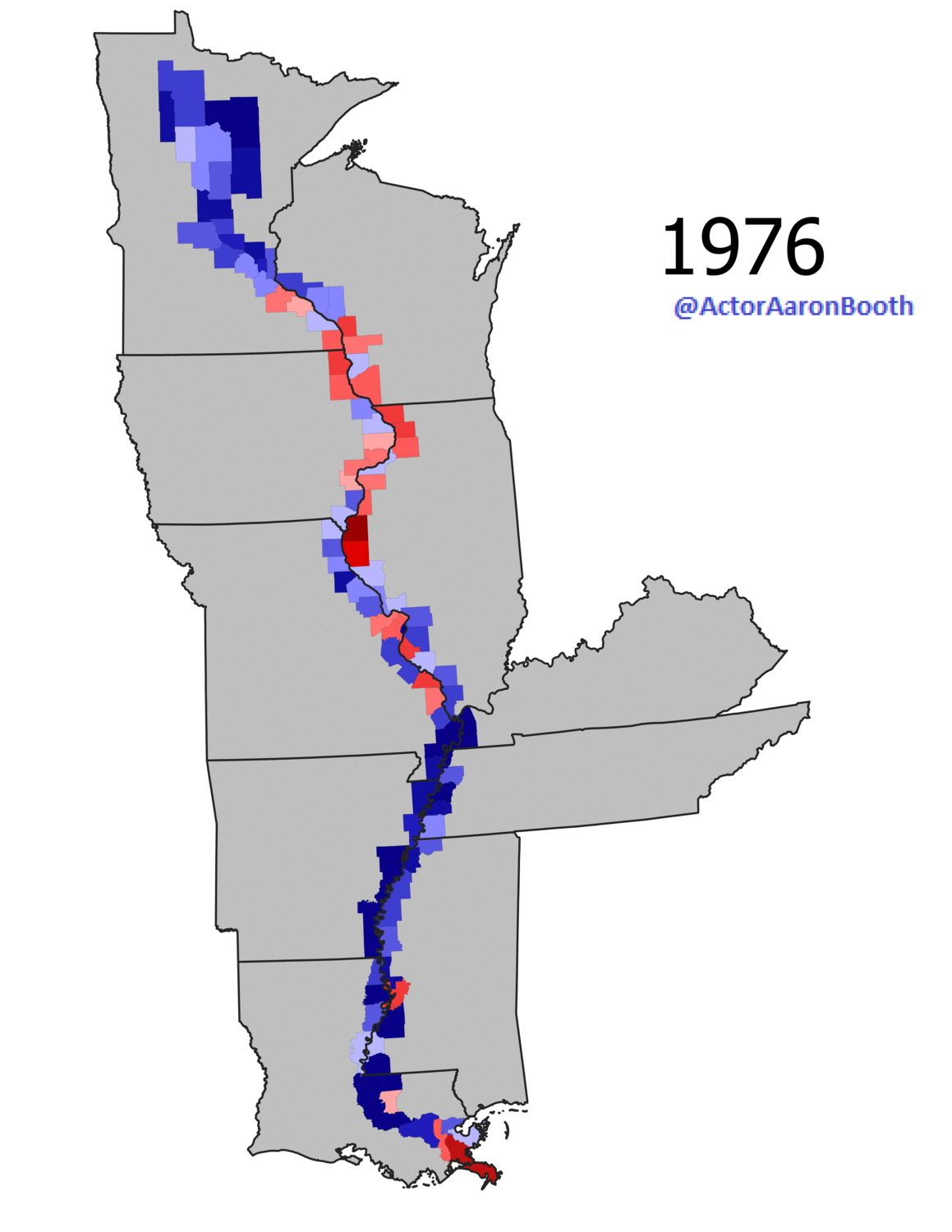
The trend hasn’t exactly been linear.
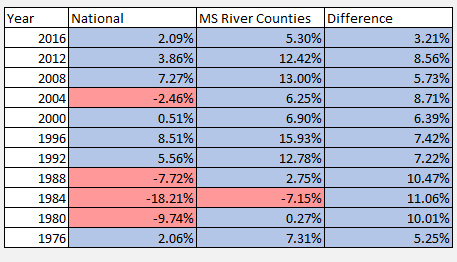
One interesting thing to note is how the Democratic victory margin in 1976 and 2016 are nearly identical, but with obvious geographic differences (Carter weaker up north, Clinton stronger in suburban regions and pockets of the South):


The intervening years saw fortunes ebb and flow.
Carter narrowly carried these river counties in his 1980 loss to Ronald Reagan and Reagan’s dominating re-election made him the most recent Republican to sweep the region in 1984:
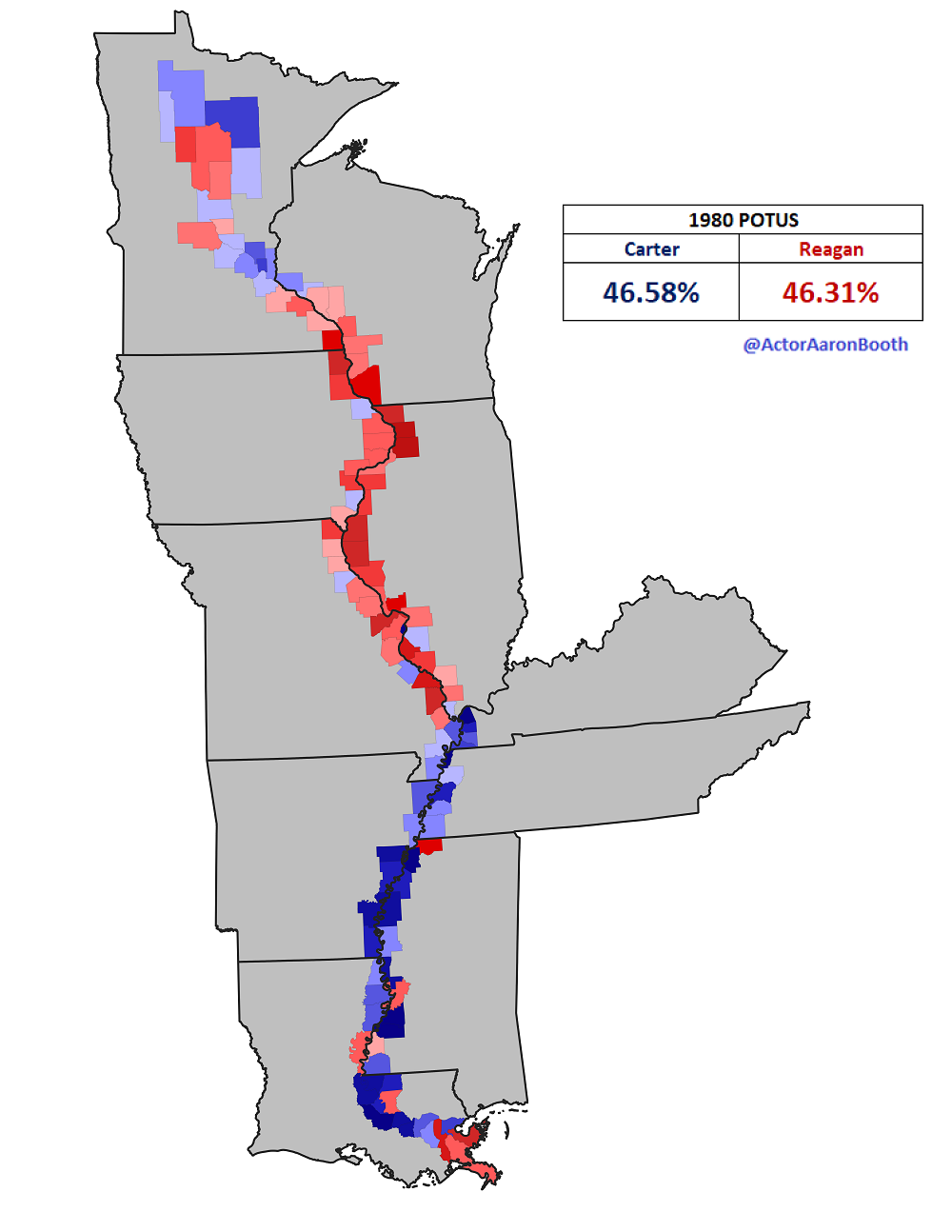
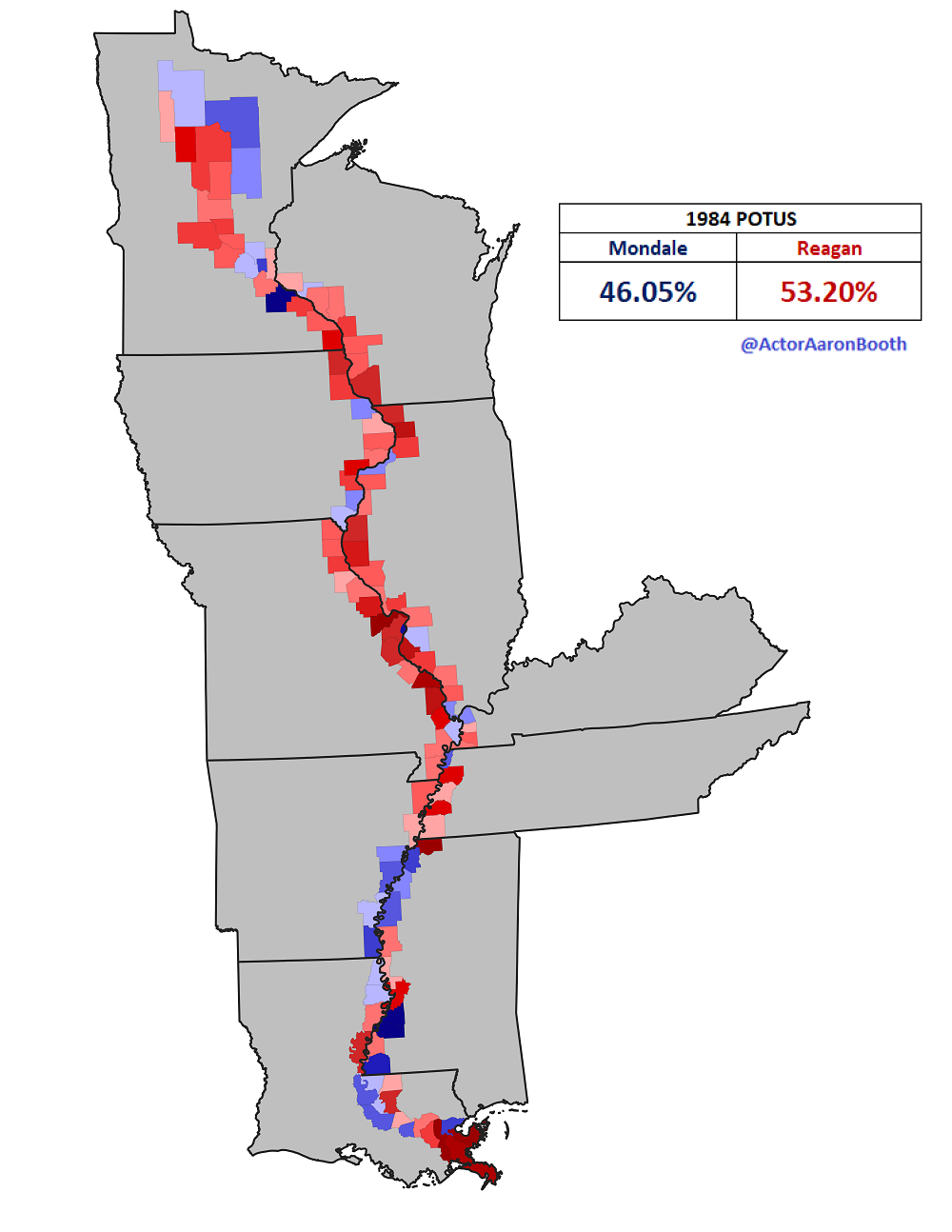
Democrats held onto the region narrowly with Dukakis…
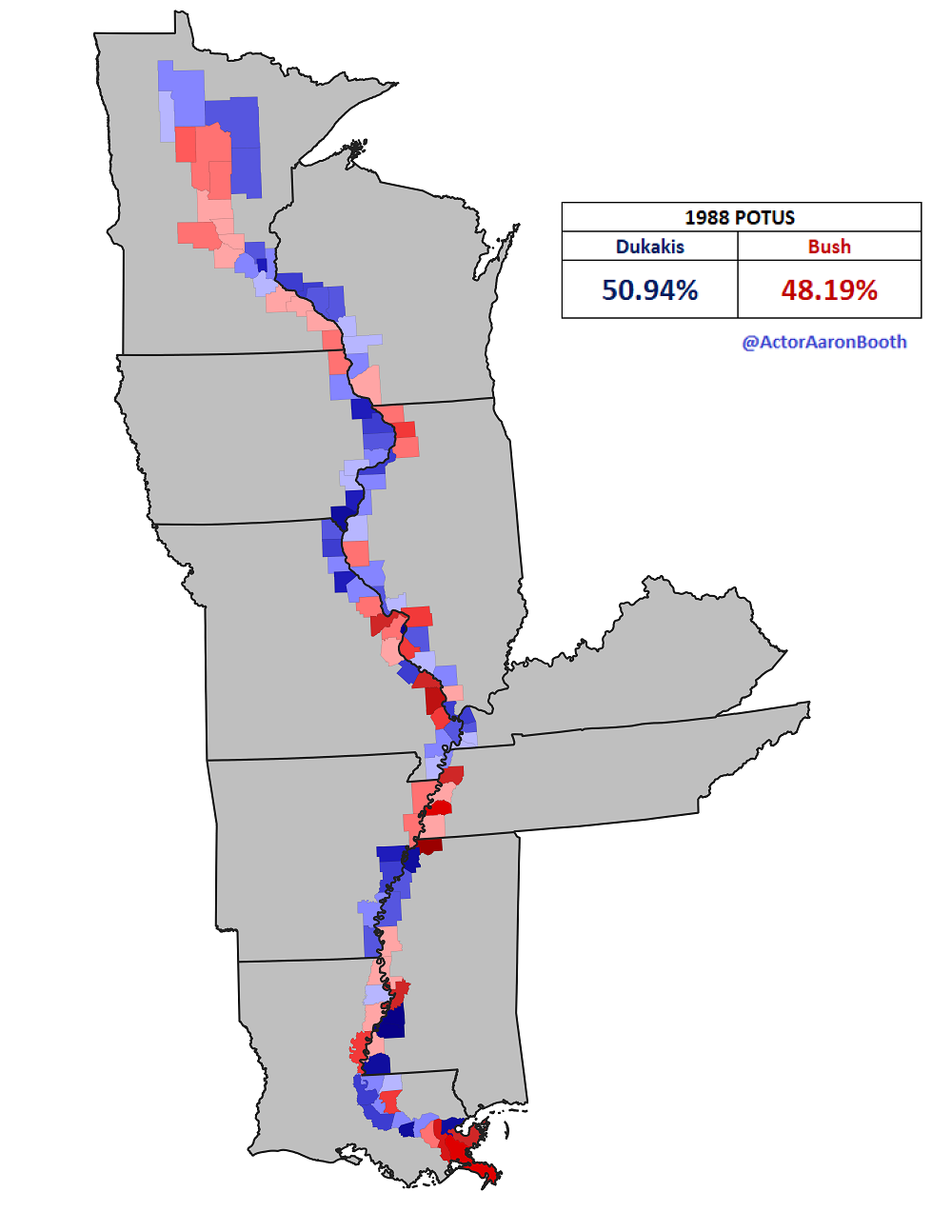
And the two largest Democratic margins were in 1992 and 1996 when Bill Clinton’s strength in Arkansas, Tennessee, Kentucky, Louisiana and Missouri helped him carry every single state but Mississippi, twice.


George W Bush pulled the region rightward in both 2000 and 2004:
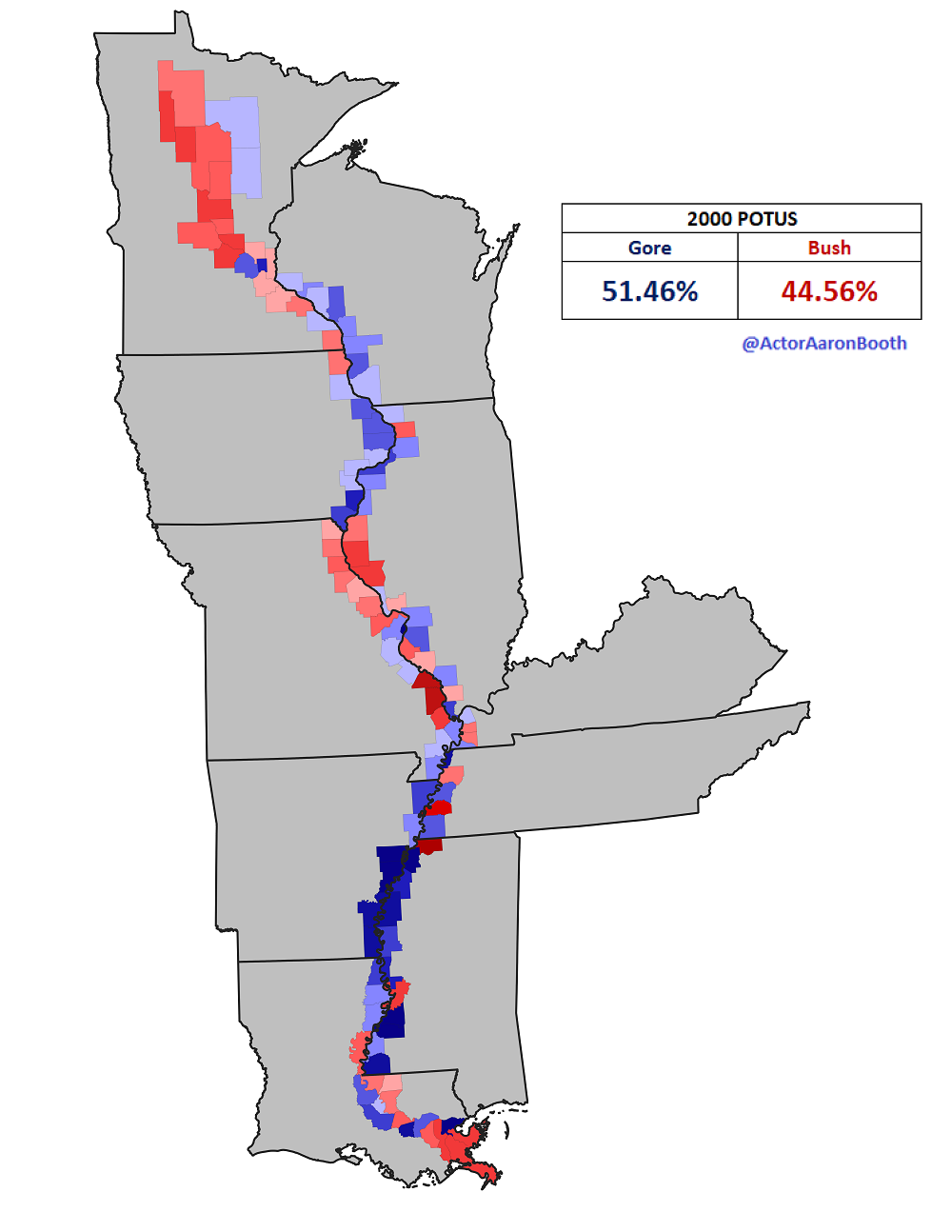

Barack Obama had similar success to Clinton 2008 by improving on margins in the counties that border the River in Illinois, Wisconsin and Iowa, though he lost every border and Southern state. He had some slip in 2012 but still won them by 12% overall.
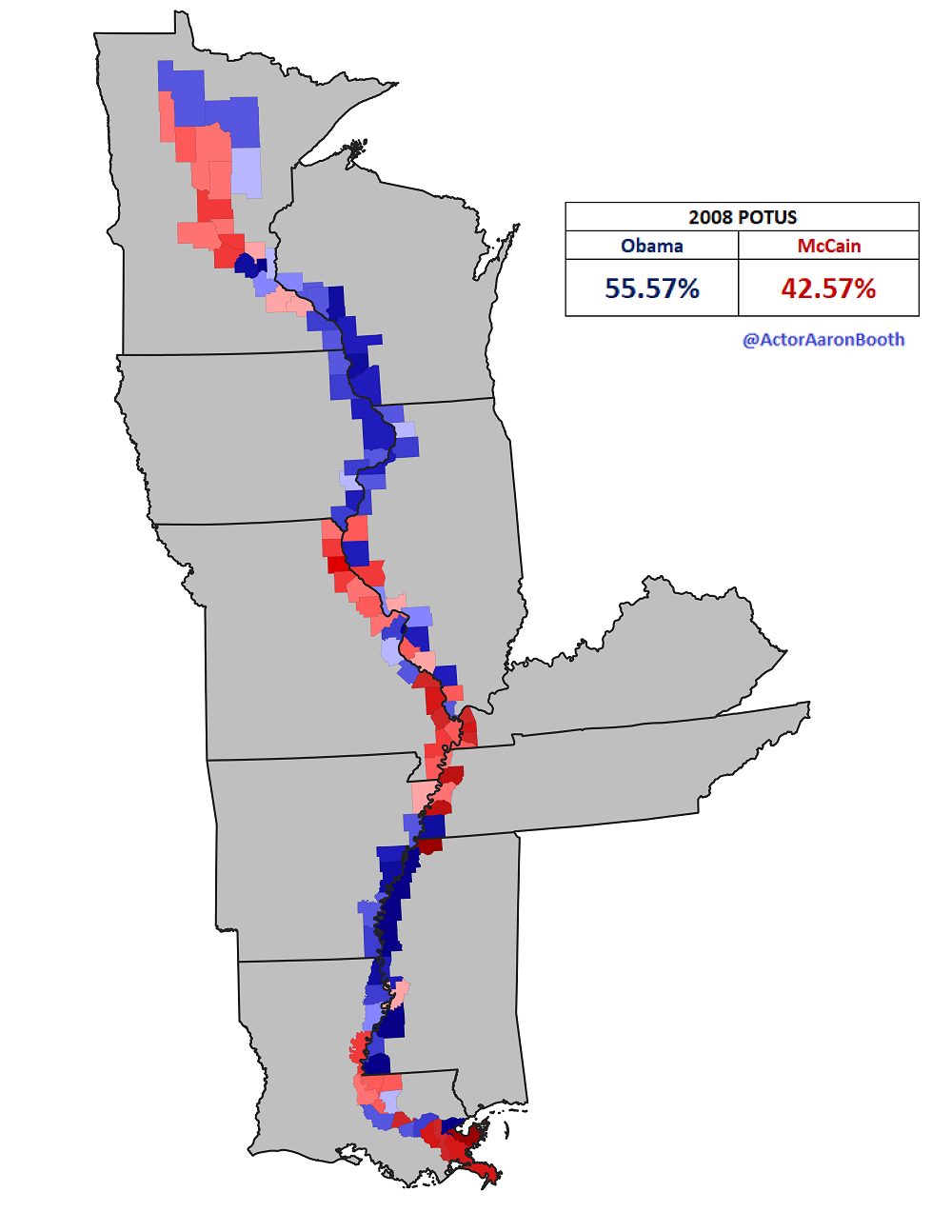
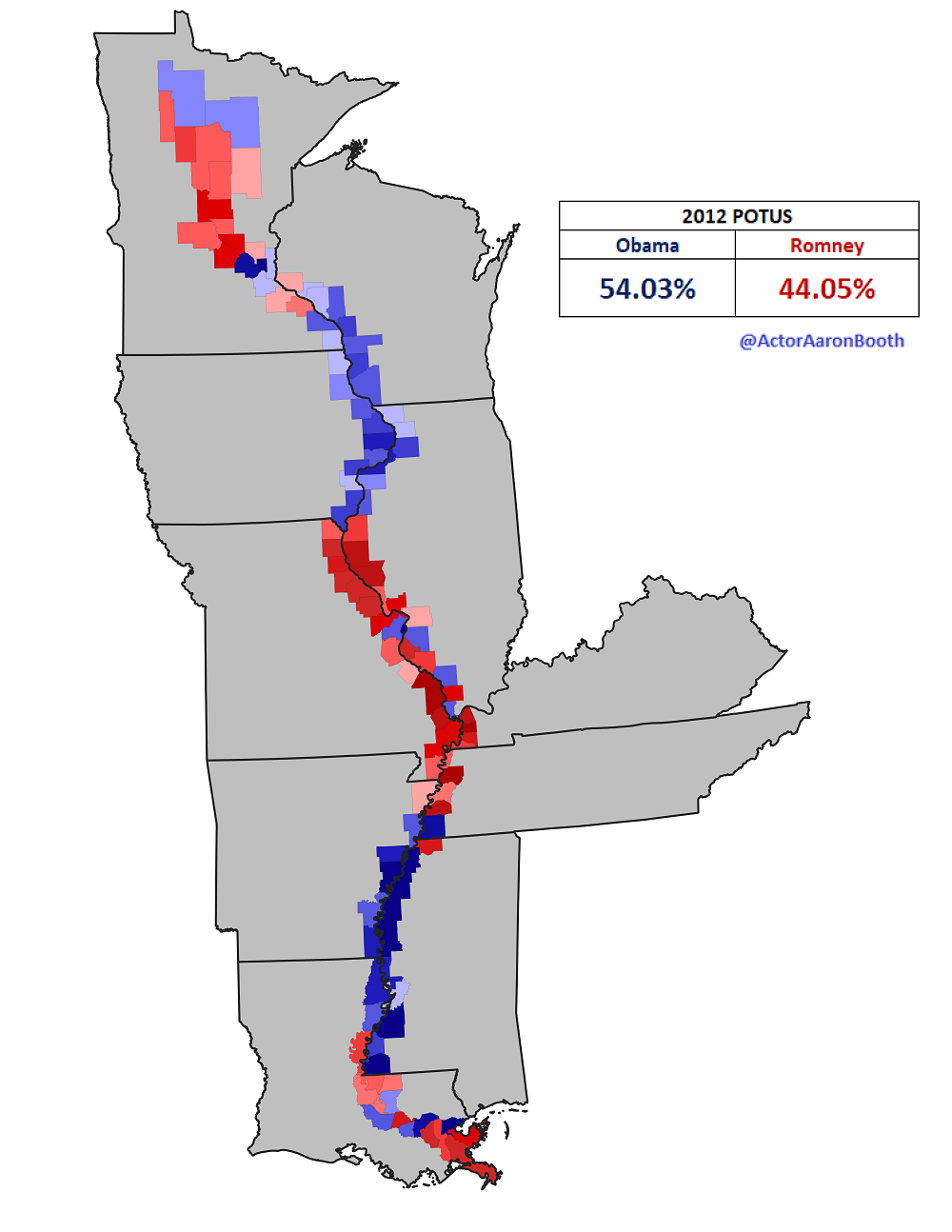
Let’s jump back to 2016. In the Senator’s home state of Minnesota, Hillary Clinton carried the river counties 51.28%-39.97% while only carrying the state 46.44%-44.93%.
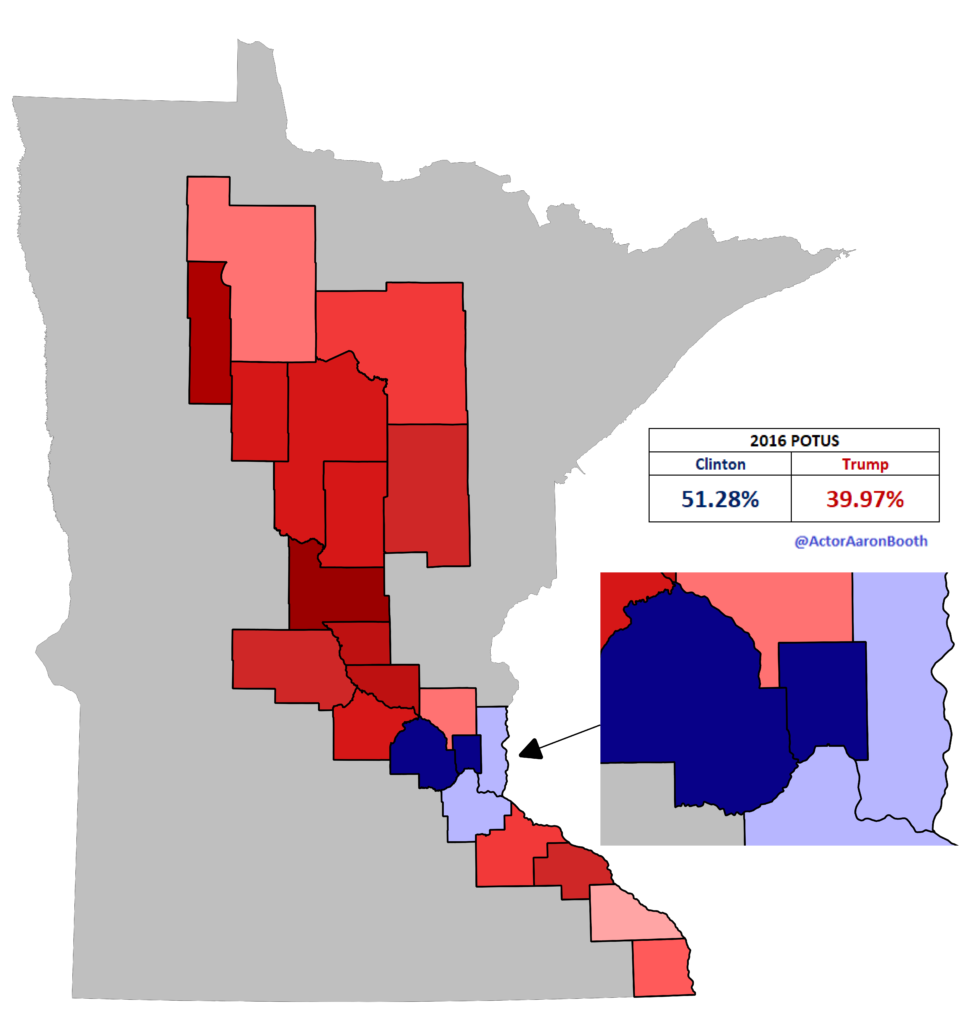
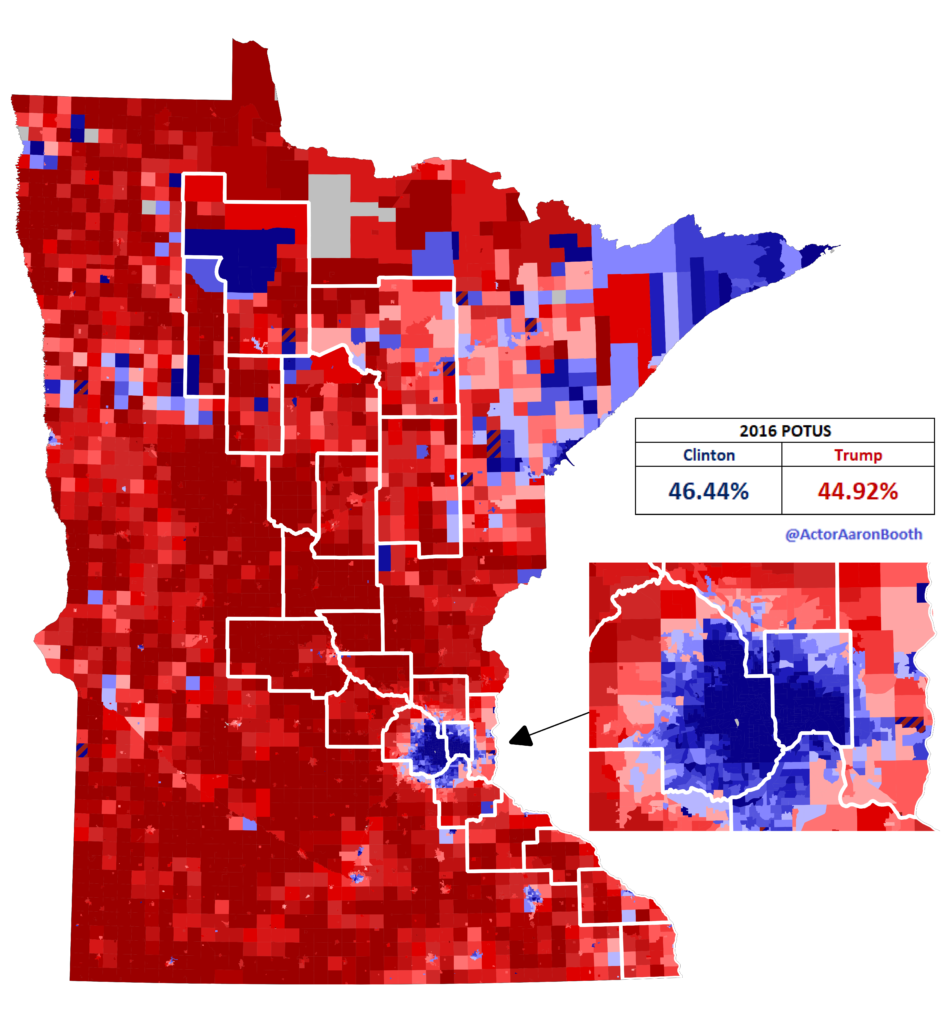
Two years later, Klobuchar carried these same counties 63.78%-32.72% while carrying the state 60.31%-36.21%.
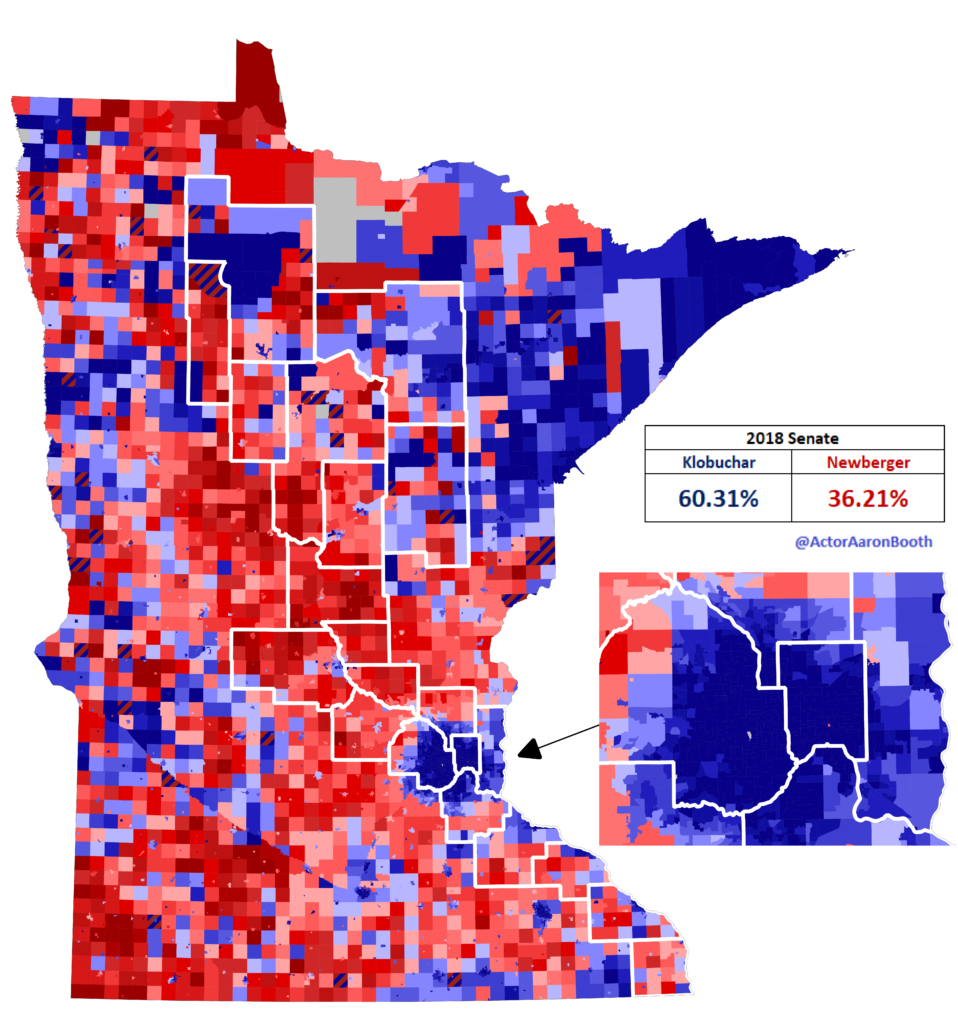
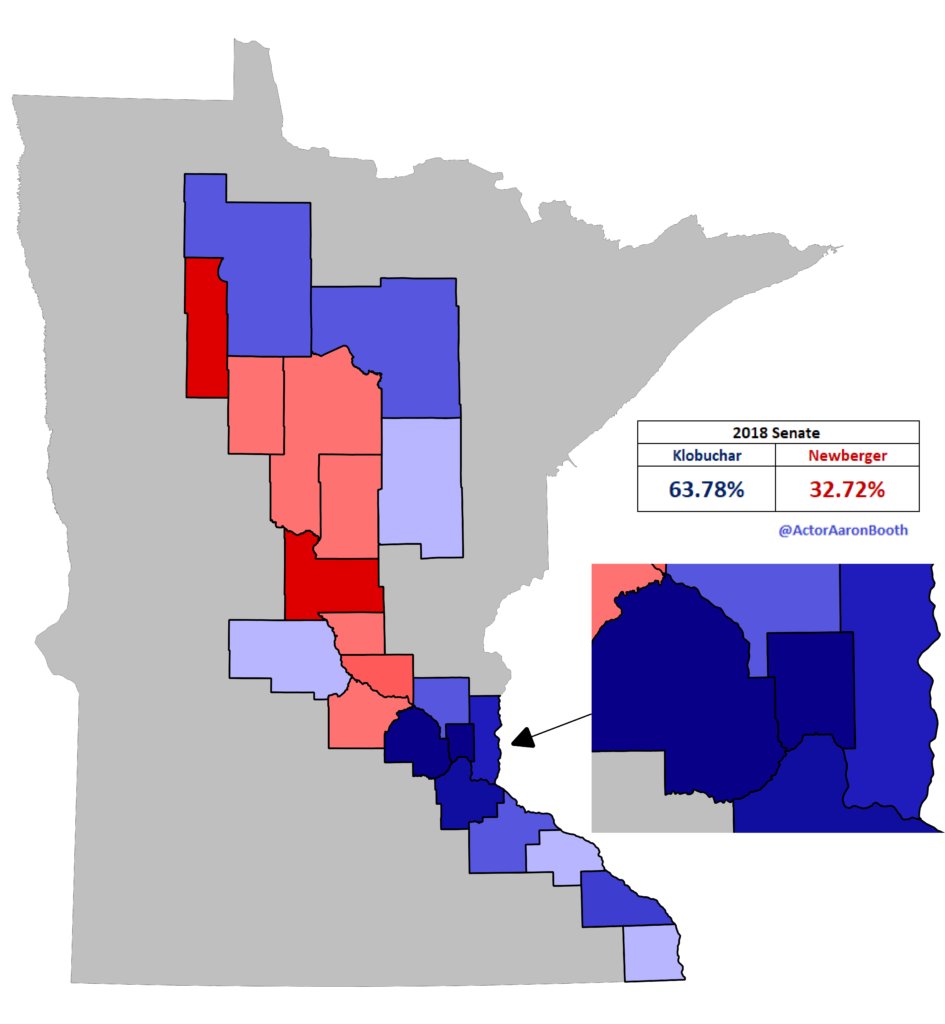
Jumping back to the last time Klobuchar was on the ballot in a Presidential year, 2012, she carried the state 65.23%-30.53% and the counties bordering the Mississippi 66.17%-29.45%.
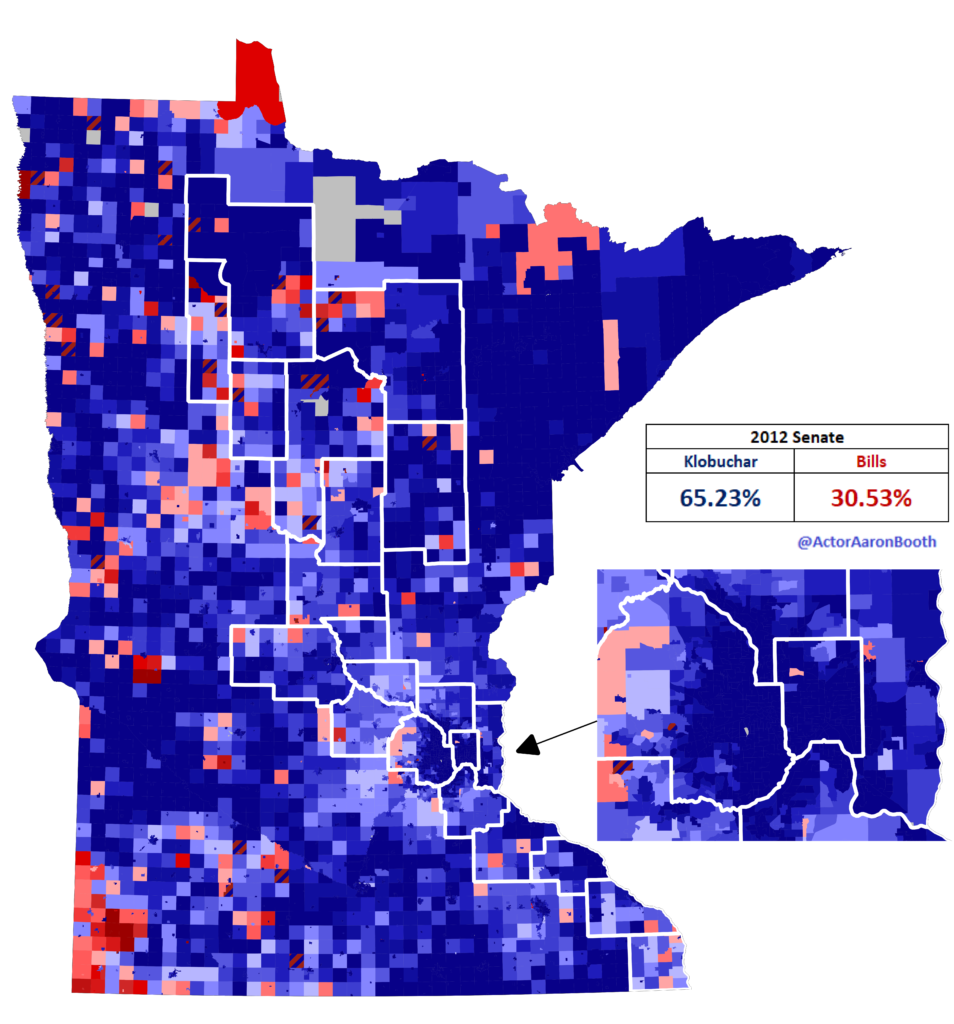
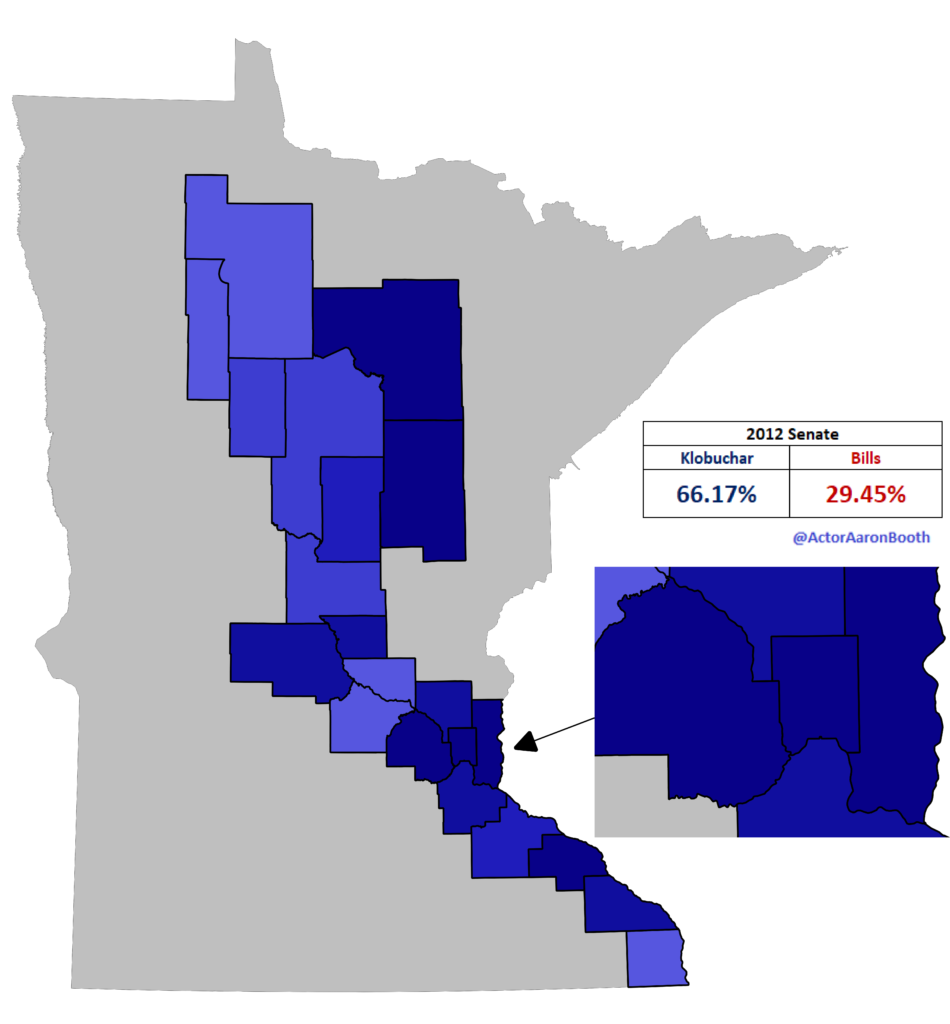
That same year Obama carried the state 52.65%-44.96% and those same Mississippi counties in Minnesota 55.04%-42.62%.
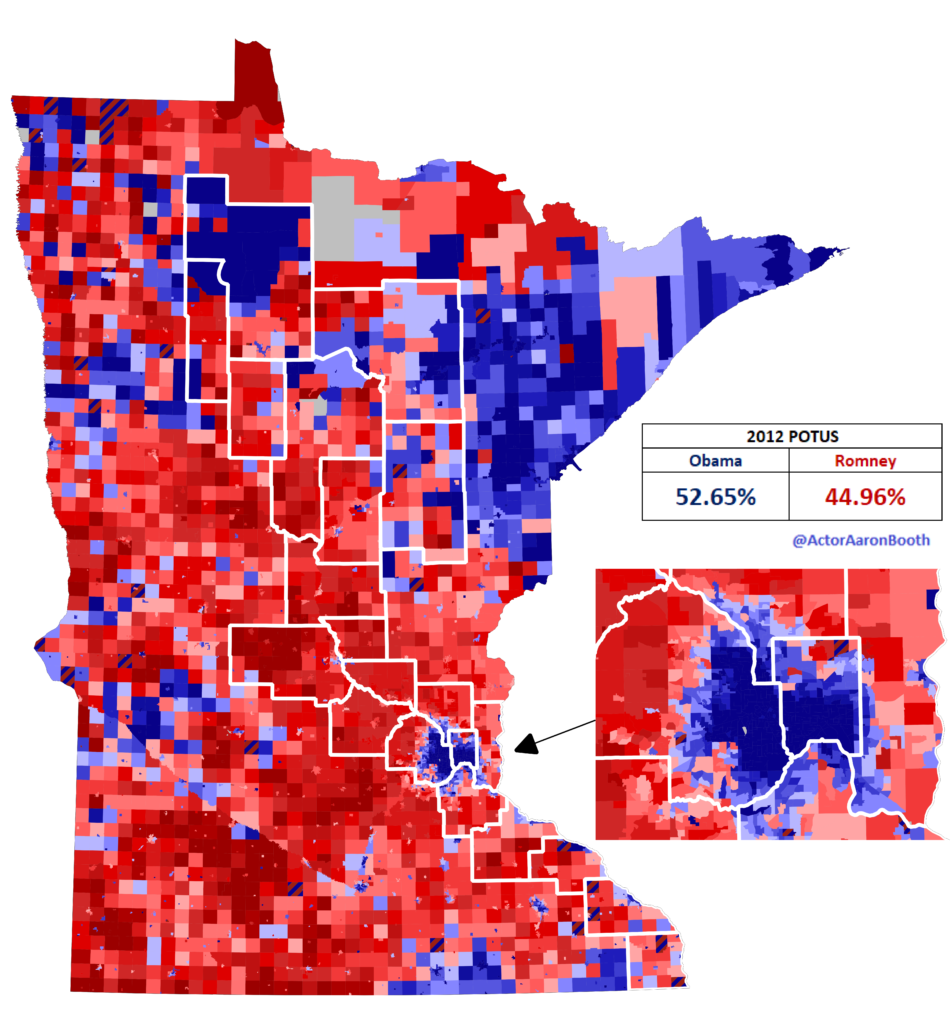
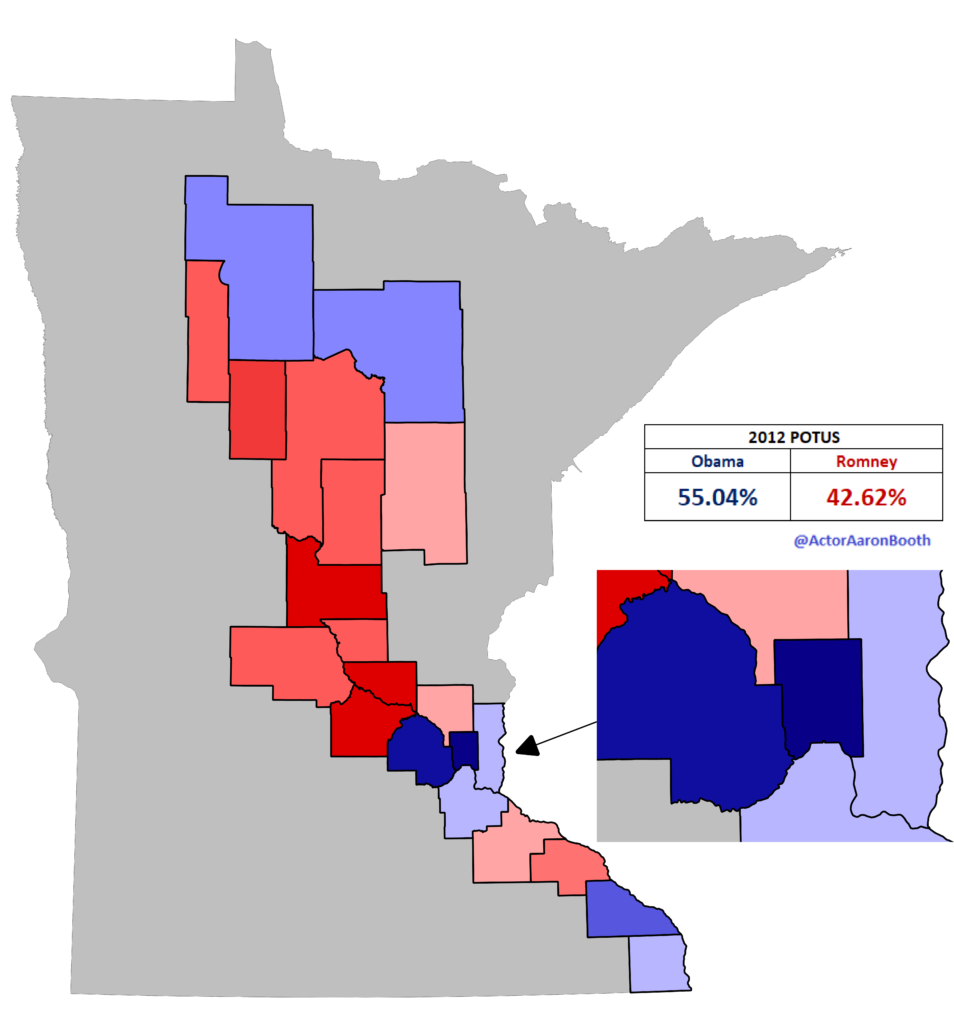

Her over performance relative to recent Democratic Presidential candidates, particularly in areas that President Trump flipped, will likely become a recurring talking point of her campaign as the primary rolls out. Klobuchar is assuming that her wider appeal in Minnesota could move the needle for her in a general election, in places like Wisconsin and Iowa. The Senator, in her elections, has been able to hold onto a considerable swath of territory filled with a large bloc of voters that ran particularly hard towards Trump: whites without college degrees. She’s kept a considerable number of them in her favor, while still winning traditional Democratic voters comfortably.
Well before the general election, Klobuchar will be betting on a strong finish in Iowa, dominance in states like Minnesota, Wisconsin, while performing well in Missouri, Illinois, Arkansas and Kentucky. The primaries along the River, however, are dispersed throughout election season: the Iowa Caucus is the opening shot while Kentucky and Arkansas voters don’t decide until May the 19th. Louisiana and Mississippi cast votes in early March, and both states features a very different demography from up river. Bernie Sanders won the caucus and primary at the far upper end (Minnesota and Wisconsin) but lost the middle four states narrowly (Iowa, Illinois, Missouri, Kentucky) and lost the lower four convincingly to Clinton.
Klobuchar will have to perform strongly well beyond these states to have any chance of winning the nomination.
Still, with a dozen candidates vying for delegates in states that all award proportionally, a regional focus could yield a delegate count large enough to keep her in contention.